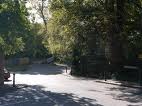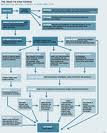Parents are encouraged to choose schools on the basis of performance as measured by standardised testing. In countries where school league tables are published, they become a major parameter parents use to judge schools.
Social background is more closely related to educational achievement in Australia, Britain, the US and Germany, than it is in top performing countries such as Finland, Canada and South Korea.
 Standardised test results tend to identify the schools with a more affluent catchment. However, to parents these schools appear to be the schools with a higher quality education and they tend to be oversubscribed. In some places, where schools reach their physical limit, new enrolments are limited to children living in the neighbourhood. Those who can afford to, move to areas where such ‘high performing’ schools are located – the leafy suburbs with high cost housing.
Standardised test results tend to identify the schools with a more affluent catchment. However, to parents these schools appear to be the schools with a higher quality education and they tend to be oversubscribed. In some places, where schools reach their physical limit, new enrolments are limited to children living in the neighbourhood. Those who can afford to, move to areas where such ‘high performing’ schools are located – the leafy suburbs with high cost housing.
The performance of a school on standardised tests may also reflect the enrolment policy of the school rather than the quality of education they offer. Competing schools try to avoid enrolling students who do poorly in tests or who are labour intensive, that is students with emotional problems, family problems, learning difficulties, special needs, or drug habits.
In a competitive school market, “entrepreneurial schools positioning themselves to attract a middle-class clientele shed the poor, the troublemakers and the nonconformists as fast as they can, to the poor old ‘comprehensive’ down the road.”
 Schools that are particularly good at providing for children with special needs try to avoid getting a reputation for this because they might then attract such children, and the economic returns for educating children with special needs is poor. In contrast, many schools put extra resources into educating the top performing students so as to boost their school’s academic status in the eyes of parents.
Schools that are particularly good at providing for children with special needs try to avoid getting a reputation for this because they might then attract such children, and the economic returns for educating children with special needs is poor. In contrast, many schools put extra resources into educating the top performing students so as to boost their school’s academic status in the eyes of parents.
Various governments have made attempts to prevent schools being so selective in their enrolment but they cannot prevent the variability between schools that a market system inevitably produces.
Where schools compete, head teacher Jenny Allum notes, “schools are under pressure to “weed out” weaker students and to encourage weaker students to take less academically difficult subjects. In Britain the Royal Society of Chemistry has claimed that students are being discouraged from taking A-level maths because it is a difficult subject and schools want to keep their exam results as high as possible. This means universities are having to run remedial classes.
Undesirable and expelled students in an open enrolment system end up in the “undersubscribed” schools that cannot afford to pick and choose between enrolling students because they need all the students they can get to survive economically. These schools tend to be understaffed and under-resourced. They are then “faced with having to support disproportionate numbers of socially and educationally vulnerable children without the resources necessary to do so properly”.
Many parents who have the choice in the US prefer to avoid schools that serve low-income, ethnically diverse neighbourhoods even if they are effective, good quality schools. They choose schools on the basis of reputation and social factors rather than educational factors. This enables schools that serve higher-income neighbourhoods to be selective in their enrolments and reinforce their perceived advantage by ensuring that they maintain their original social mix.
In other words some schools get to pick and choose their students, rather than the parents choosing the schools. This means that the choice offered to children from failing schools as part of No Child Left Behind (NCLB) legislation is really a mirage since successful schools are not only located in affluent neighbourhoods but are difficult to get into. Consequently, only around one percent of children who are eligible to change schools throughout the nation actually do so.
 The obstacles for parents who decide to exercise school choice are illlustrated in this diagram (right) showing the procedure for New York schools. This means it tends to be the better educated parents with more time and motivation that exercise choice.
The obstacles for parents who decide to exercise school choice are illlustrated in this diagram (right) showing the procedure for New York schools. This means it tends to be the better educated parents with more time and motivation that exercise choice.
A study of Boulder Valley School District in Colorado where schools compete for students found that parents choose schools largely on the basis of test scores although it is mainly white middle-income parents that move to the high scoring schools. This leads to even lower test scores in unpopular schools, more students moving to more popular schools, and a spiral of decline for schools with poorer student populations.
In England, where schools are not supposed to be selective in enrolments, the popular schools interview parents for suitability and do their best to put off unsuitable parents in the interview and through other means.
In 2004/05 almost one in ten parents applying to enrol their children in secondary schools are so unhappy at being denied their choice of school that they have lodged formal appeals.
A study by Institute for Public Policy Research (IPPR) found that schools were covertly selecting students by ability, so that their enrolments did not reflect the social composition of the local area; particularly city academies, faith schools and foundation schools.
As a result of these practices a new admissions code, which will come into force in September 2008, bans schools from deciding enrolments on the basis of parental occupation, financial, marital or social status, or donations to the school. Nor are they allowed to discourage poorer families by having expensive uniforms. However priority can be given to siblings of children who have attended the school and ten percent of enrolments can be based on ‘aptitude’. Nevertheless, the “gulf between the best and worst” primary schools in terms of exam performance has been widely recognised by researchers and the Office for Standards in Education (Ofsted).
In Australia “some selective schools take only students in the top 1 per cent of the population, academically. Other comprehensive schools take anyone.” And whilst the most popular public schools are able to pick and choose amongst potential ‘customers’ the weaker schools have to devote increasing resources to marketing and are struggling to survive. As a result the quality of education in those schools is actually declining.
The results of top students are falling yet the gap between the top students and the bottom students is growing. Moreover the performance of Australian students in literacy and numeracy in the OECD Program for International Student Assessment (PISA) is also falling. Associate Professor Carol Reid, associate head of the School of Education at the University of Western Sydney said this is partly the result of school choice, where the best students are sent to selective schools: "it's really residualised comprehensive high schools and local primary schools".
If you have any examples or updates you would like to contribute please email them to me and I will add them here. Please give references for where you sourced the information.